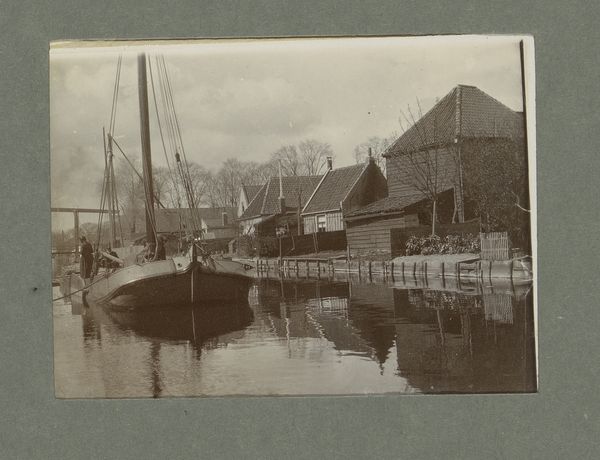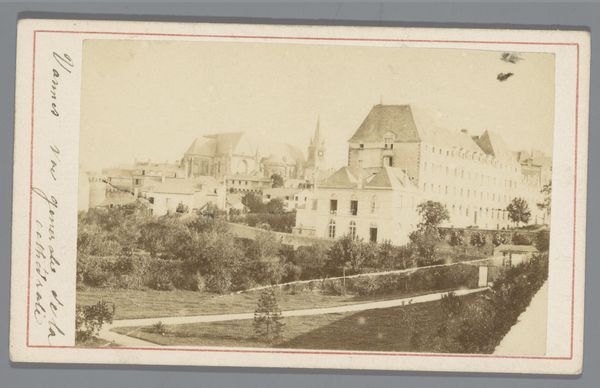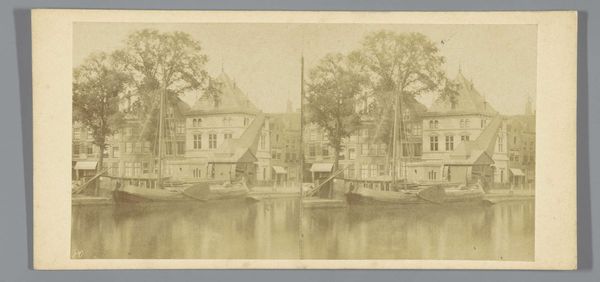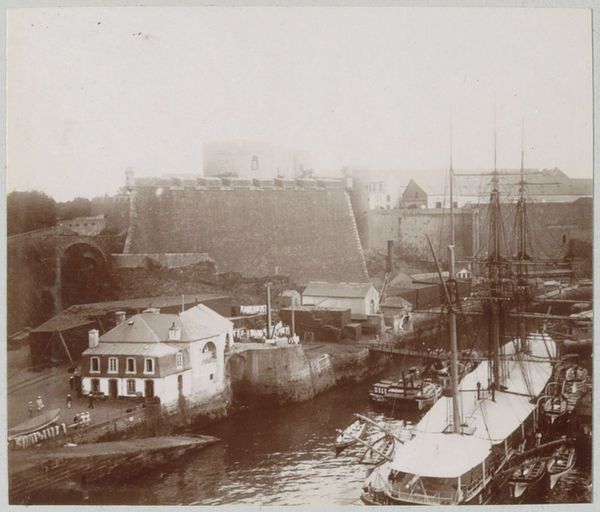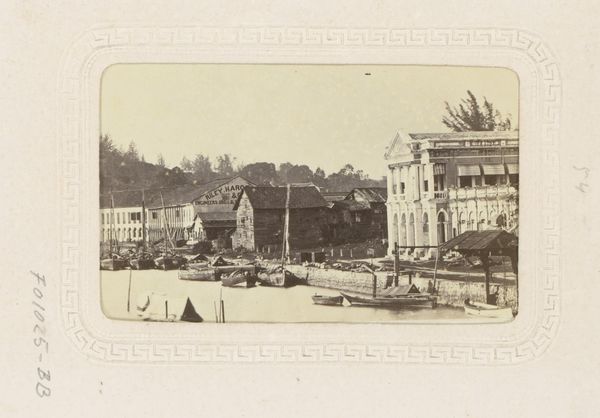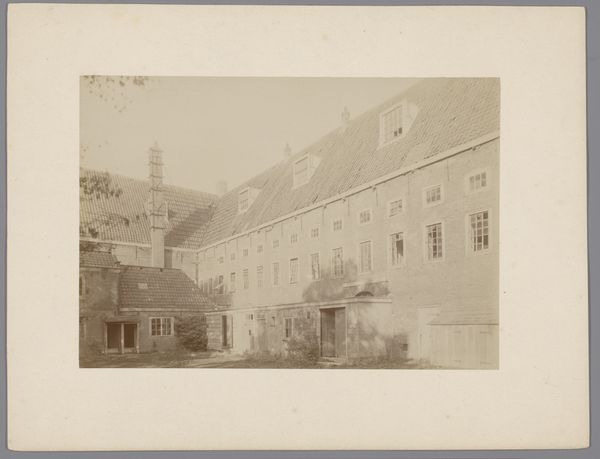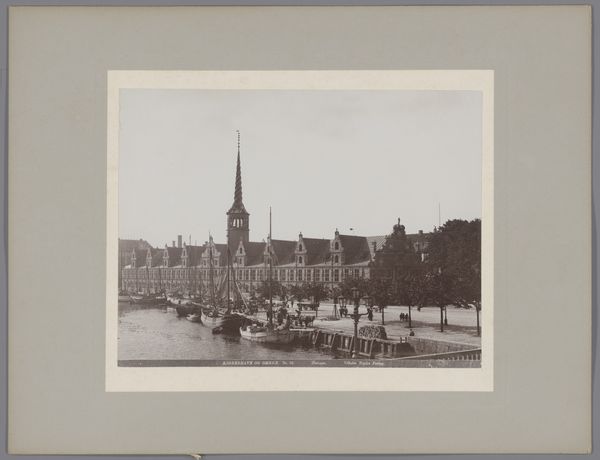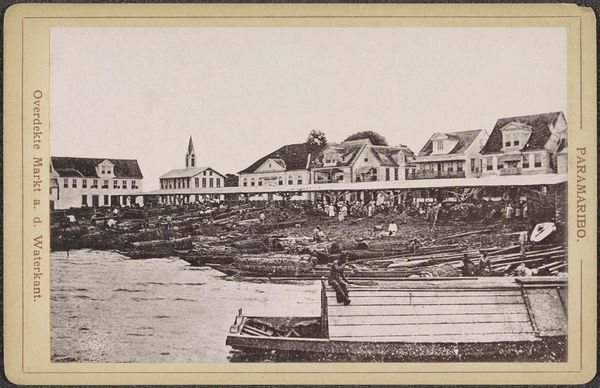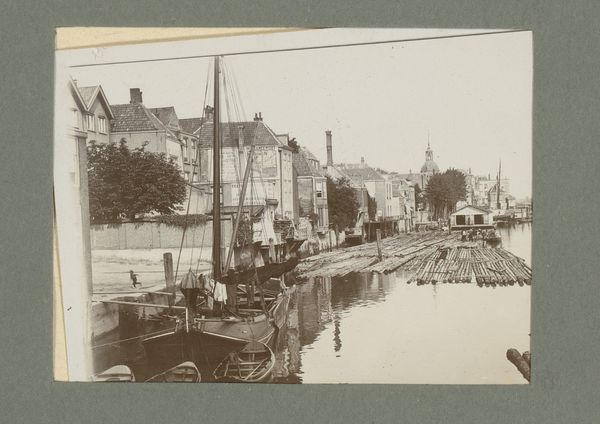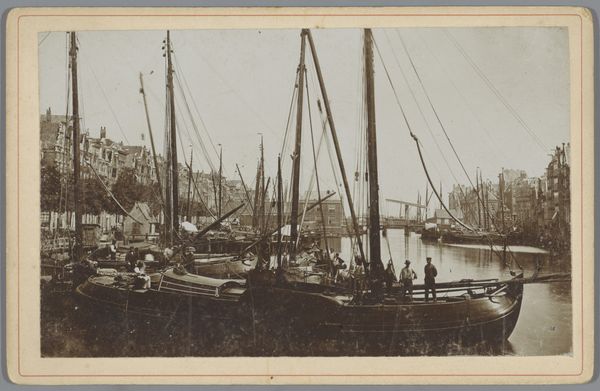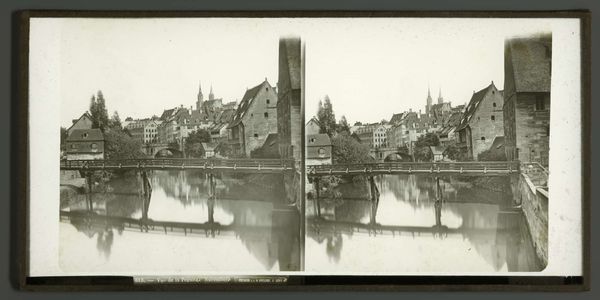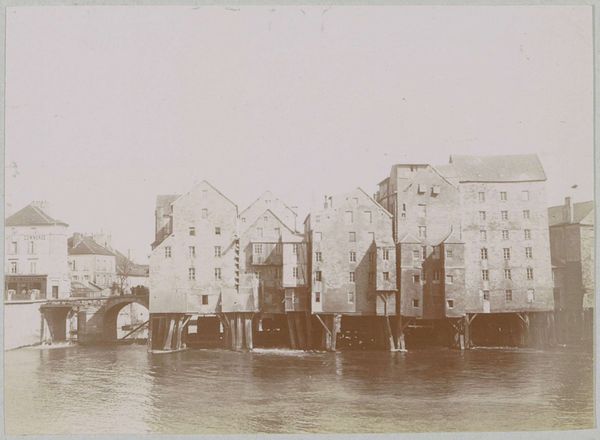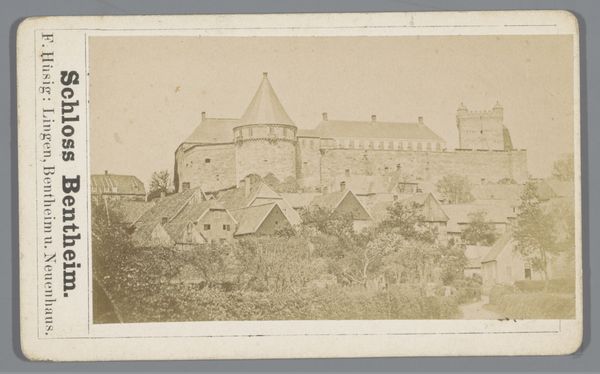
Dimensions: height 131 mm, width 95 mm
Copyright: Rijks Museum: Open Domain
I. Kunz made this photographic print of Gmunden using the wet collodion process. This painstaking technique, popular in the mid-19th century, involved coating a glass plate with chemicals, exposing it in a camera while still wet, and then developing it immediately. Looking at the image, one can almost feel the weight of the glass plate in the photographer’s hands, and imagine the darkroom conditions required for its making. The sepia tone, inherent in the process, evokes a sense of nostalgia, contrasting the emerging technologies with this traditional scene. The collodion process itself demanded precision, skill, and a deep understanding of chemistry. It blurred the lines between science and art, requiring the photographer to be both a technician and a visual composer. Think of the labor involved in transporting this technology, setting up a portable darkroom, and then completing the image on site! The final result, with its soft focus and rich tonal range, reflects both the inherent qualities of the materials and the hand of the artist. It’s a beautiful reminder of the craft embedded within the history of photography.
Comments
No comments
Be the first to comment and join the conversation on the ultimate creative platform.
